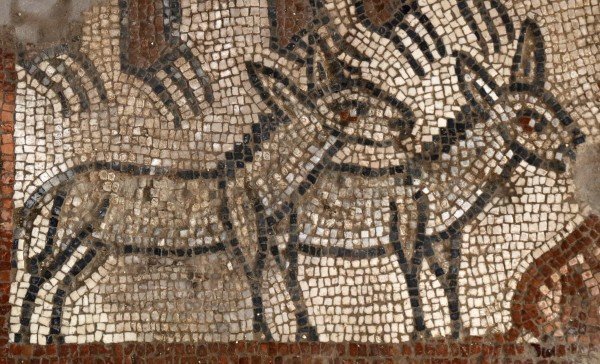An ancient mosaic from the fifth century depicting Noah’s Ark and the parting of the Red Sea has been discovered on the nave floor of a Synagogue in Israel.
The researchers are calling the discovery a rare find and have said that there are only a handful of comparable artifacts ever discovered.
The mosaic has imprinted on it a representation of a soldier from the Pharaoh’s army being swallowed by a gigantic sea creature. The mosaic also features portrayals of many overturned chariots, illustrating the destruction of Pharaoh’s army in the Red Sea.
The excavation was carried out on an old synagogue in Israel and yielded the incredibly protected mosaic that was purpose-built to depict the legendary Old Testament stories of Noah’s Ark and the Exodus from Egypt.
The synagogue also contains a unique nonbiblical mosaic depicting a meeting between Alexander the Great and a Jewish high priest.
According to the researchers, the Synagogue at Huqoq was built during the time when Roman Empire ruled over the region. The collection of mosaics has been carefully removed and shifted to a safe location for conservation purposes.
The 5th-century Synagogue had been the center of an elaborate excavation project since 2012 and has since produced a number of various mosaics.
Since the start of the project four years ago researchers and archaeologists gather at the site every summer and work all through summer digging through various parts of the synagogue carefully revealing artifacts and other crucial information.

Photo credit: Baylor University
The excavation project at Huqoq is a joint venture of four schools including the University of North Carolina, Brigham Young University, Baylor University and the University of Toronto.
One of the mosaics discovered at the Huqoq site soS far contained a depiction of another Old Testament legend of Samson and his foxes, showing Samson heroically carrying the massive gate of Gaza on his shoulders.
Both stories can be traced back to Bible and have great inspirational value. In another find, researchers have found a scene on a mosaic containing an inscription in Hebrew surrounded by strange mythological creatures, animals, and some human figures.
“The ancient coins … are critical for our knowledge of the monumental synagogue and the associated village,” Nathan Elkins, a member of the research team and a professor of art history at Baylor University, said in a statement.
In a recent discovery, a highly decorated mosaic depicts an ark with a collection of pairs of animals including leopards, elephants, snakes, donkeys, lions, bears, camels, ostriches, goats and sheep.
On the same mosaic, there is another legend depicted showing a number of destroyed chariots and soldiers being swallowed by large fish.
Jodi Magness, the Director of the excavation and professor at the University of North Carolina, said that these biblical legends are very rare on mosaics or in ancient synagogues.
This makes the recent discovery particularly significant and is so far the crowning achievement of the excavation project at Huqoq site.
